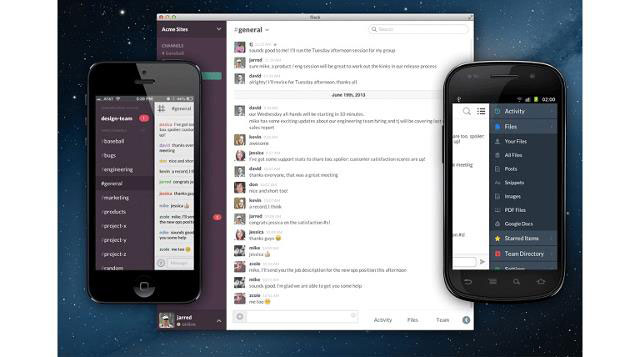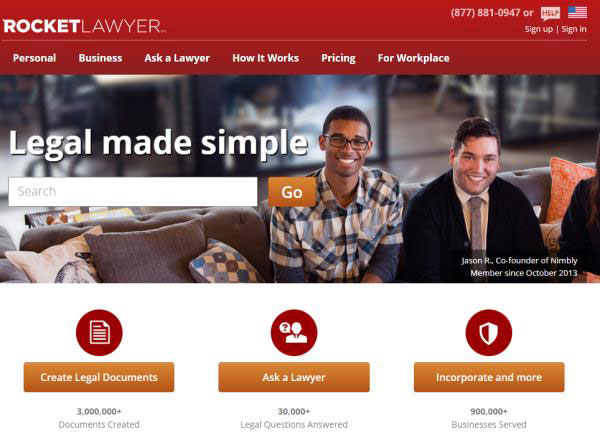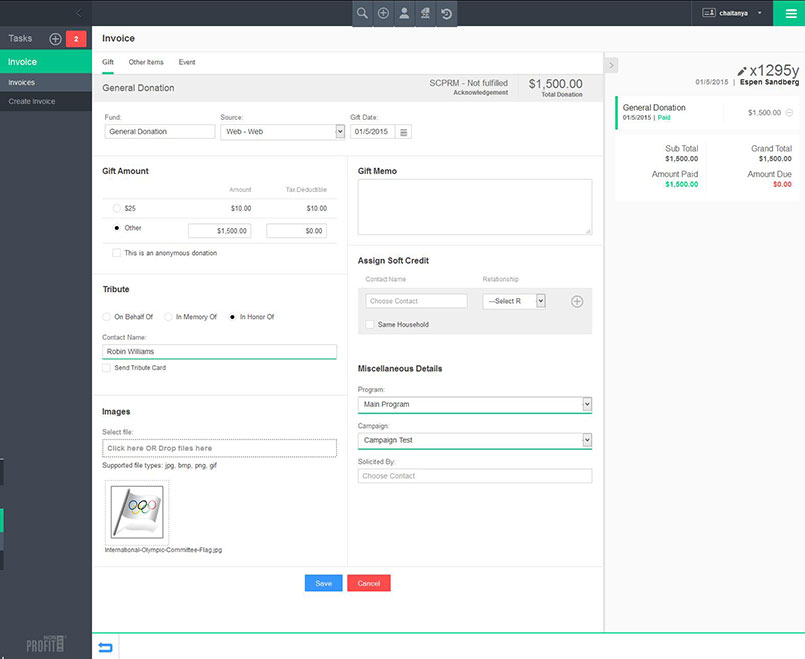How to Use Modern Tools to Manage Resources and Volunteers
Growing an organization in the digital age requires a more tactical approach than just marketing.
April 1st, 2016 | By: Sujan Patel | Tags: Management, Tools, Strategy
Running a non-profit can be a tremendous challenge. Those who are deep in the planning and execution of campaigns understand the magnitude of their efforts – and the consequences of poor execution.
Day in and day out, organizations are struggling to move the mission forward, encouraging their volunteers to raise donations and bring in more support. It’s an uphill battle, as evidenced by the steady decline in charitable giving since 2015, per the Blackbaud Index.
Growing an organization in our digital age, when contributions are down, is a challenge that requires a more tactical approach than just marketing. It requires a complete audit of operational processes, while also looking at ways to streamline donor outreach.
Because so much of what you do relies on volunteers, there will always be reliability issues that stunt the growth of your programs. It’s a challenge faced by even the most well-funded organizations.
With a little guidance, a few tools, and the right people, you can correct those operational and outreach issues and continue focusing on growth.
Tackle the Major Obstacles First – Resource Management and Operations
Budgetary issues, in addition to a fatigued, disparate workforce, can tap what little resources you have available. They can stunt the growth and momentum your organization may have already achieved.
Aging processes can also create operational bottlenecks that make it virtually impossible to set time aside for donor outreach. It’s not easy to direct teams and oversee operations when you’re constantly managing broken processes and disengaged staff.

Here are the key areas that you’ll need to address.
1. Finding the Right Tools for the Task
Volunteers aren’t necessarily working out of a central office anymore. In a digital age, your team is spread out and (likely) spread thin, working remotely to balance life, work, and volunteer obligations.
With the right tools you can create a cohesive team that is easier to lead.
You’re likely already utilizing some kind of a customer relationship management tool (CRM) for maintaining and cataloging donors. Thankfully, many of the tools you’ll use work with virtually every popular CRM.
Here’s how the right tools can be used to solve common bottlenecks in your organization:
Managing and Executing New Projects
It’s a bit like trying to manage an orchestra, isn’t it? With all the individual projects and tasks spread across volunteers, it’s a chore to make sure everyone is where they’re supposed to be, and doing what they’re supposed to be doing.
A project management system can bring everything into one place so you can assign and track tasks and monitor campaign progress. Smartsheet is a great choice because it’s easy to customize, and even easier to learn.
Team Communication
A lot of organizations communicate with volunteers and team leaders via email and by phone or text. As conversations travel back and forth, critical information can get buried in email threads. The original message can also be miscommunicated as it’s passed along through phone and text paraphrasing.
Using a communication tool, you can bring all the dialogue into one place for timely, accurate discussions. Slack is a terrific communication tool for keeping your team in the loop. Have one large group discussion, or create channels where individual teams can talk. Messages are never lost, so it’s a great way to keep track of every discussion.

Reliability and Accountability
Even with a project management system, it can be a challenge to keep up on tasks floating across volunteer groups – especially when multiple parties are involved and tasks or projects change hands.
Using a process management tool like Tallyfy, you can easily create approval workflows for your team. When a task moves to the next step or changes hands, the individual accountable receives a notification. If approval is required for a task to move forward, a team leader or administrator can be notified. This automation creates more accountability and ensures that tasks aren’t easily forgotten or missed.

You can get the most out of these web-based resources by working with a virtual assistant. Smaller tasks, team updates, and resource management can be taken off your plate to give you more time to focus on operations and growth.
2. Legal Compliance
With changing regulations and online operations extending across state lines, legal compliance can be a major issue – and a costly one. There’s a lot to keep track of in order to stay compliant, including:
- Maintaining records and minutes
- Filing 990 returns on time
- Following bylaws and guidelines for conducting board meetings
- Generating and adhering to policies, such as conflict-of-interest policies
Retaining a lawyer can be a costly expense for a non-profit, especially given all the documentation required for various activities, along with federal and state regulations. If you’re not familiar with those regulations, you could inadvertently overstep and face fines – potentially having your non-profit status revoked.
To control costs and remain compliant in order to maintain non-profit status, use a legal resource center like Rocket Lawyer.

A Full Team at Your Disposal – The primary benefit of a service like Rocket Lawyer is a flat monthly subscription fee. At a fraction of the cost of retaining a single lawyer, your organization still gets the benefit of a complete law firm.
Rather than consulting with a single lawyer on retainer, you can post questions when you need legal advice and they will be viewed by a bank of lawyers. Responses come back quickly, so you won’t be left waiting for an answer. You’ll hear from lawyers in your area, familiar with local as well as federal requirements specific to your non-profit.
Reduce Costs with Legal Templates – Working with a lawyer can be costly every time you need documents drafted. Rocket Lawyer helps by providing a resource library with more than three million templates. Take a prebuilt document that fits your specific legal need, populate it with your information, and you’re done. You can even have a lawyer review the completed document to ensure its accuracy.
Keep Everyone Covered – Business plans are available that can provide representation for you and any of the volunteers or staff supporting your organization.
Using a tool like this, you’ll be drawing on reduced-cost legal advice to ensure you’re completely covered in operating your non-profit within the established boundaries of the law, and that all of the necessary paperwork is filed accurately and in a timely manner.
3. Donor Communication
The growth of an organization relies strongly on communication – specifically, communication with donors. Improving communication and producing more effective outreach starts with having the right tools.
Step 1: Organize Donors
A CRM for managing critical donor information makes it easy for volunteers to leverage the personal data of donors and encourage support. The more information that is stored, the easier it is for volunteers to make a personal connection with donors.
Donor information can be imported from spreadsheets to populate a CRM, and many online donation platforms can automatically upload donor information into a CRM once donations are made.

A CRM will also make it easy to track donations historically per donor, and sort them through reports to create targeted contact lists.
Step 2: Create a Communication Plan
A plan for communication with donors doesn’t need to be complex. It just needs to include a few key items:
- How often does donor outreach take place?
- Who is responsible for contacting donors?
- What methods of contact are used?
- How often does follow up take place?
- How are donors segmented for a contact campaign (frequency of donation, size of donation, date since last donation, etc.)?
Your plan can act as a basic schedule for the teams responsible for contacting donors directly. Once initial contact is made, your team can use your CRM to set tasks for a follow-up call if necessary. If you don’t use a CRM for task tracking, Google Keep is a free platform that can help you, your team, and your VA track notes and reminders on donor outreach.
Step 3: Create Talking Points
The most effective outreach will happen when volunteers are all on the same page and they know what to say to donors when they connect. You shouldn’t create a script, but you still want to offer enough guidance so that volunteers are comfortable when talking to donors.
Create a list of three to five bullet points that speak to the mission and values of your organization, along with the value proposition. The value proposition basically answers the question “Why should I donate or support your cause?”

To supplement those bullet points, create a short list of the most frequently-asked questions from donors, along with the recommended answer.
This information makes outreach more fluid, and volunteers will be less likely to try getting out of making calls when they have supportive information to work with.
Step 4: Always Follow Up
No matter the outcome of an interaction with a donor, always follow up within 24 hours and send a sincere “thank you.” Email is a sufficient means to follow up. If you use a CRM, you can create automated workflows that trigger after contact is made, so an email is automatically generated.
If you have difficulty finding volunteers to communicate with donors, or have had less than desirable results in the past from unreliable volunteers, a VA may be a smart investment. With a good communication plan in place, a virtual assistant can plug in and start making contact immediately using the tools you have in place.
4. Balancing costs

Managing the finances while balancing the costs of a non-profit is no small feat. Growth relies on compliance and utilizing funds in a way that ensures that expenses are covered, and funds are available for growth programs, mission support, and marketing and advertising.
Rather than trying to manage the organization’s funds in-house, which either takes significant time and attention or requires a dedicated treasurer/chief financial officer, your organization should outsource.
Tasking a remote accountant or outsourced chief financial officer removes the burden of financial compliance and balance sheets from your team. You’ll also reduce the overall cost of managing and balancing finances.
Step 1: Agency or Accountant?
When outsourcing, you have your choice between working with an individual freelance accountant or outsourcing to an agency. There are benefits to each and it really boils down to the scale of your organization and the kind of relationship you’re looking for.
A freelance accountant will give you a more personalized experience, and in time will become very familiar with how you operate. They’ll also have a vested personal interest in your success, as individual accountants can only handle so many clients. Depending on the volume of work and commitment you require, your account could be a significant portion of their income. For smaller organizations, working with an individual might be a favorable cost-saving choice.

The only real con of working with an individual is that same limitation on time. They’re likely to have other clients and are less likely to be available in off-hours. If you have an urgent matter, it might be difficult to reach them, or get something turned around quickly.
For larger organizations, it may be best to outsource to an agency that employs a bank of accountants. While an accountant is typically assigned to a client, if they become unavailable for any reason the agency will have another accountant take over. You may get faster turnarounds with an agency, but you’re less likely to get that personalized touch of working with an individual who is self-employed.
Step 2: Set Expectations
When you decide to outsource, you need to establish your expectations up front. This is easier to do with an agency because they typically offer a set range of services in a subscription model.
Your initial agreement and expectations should include:
- The services or blocks of hours you’re paying for each month, and how much it will cost
- The responsibilities of the accountant and scope of their duties
- How documents are shared
- Communication expectations, including frequency of reporting
You’ll also want to discuss your organizational structure with your accountant in regards to your status as a non-profit. Because there are legal obligations regarding such things as report filing with the IRS, it’s important to know that your accountant understands how to handle bookkeeping for a non-profit.
Step 3: Gather the Data and Review
Before you can tackle cost balancing, you’ll need to go through an onboarding process. Meet with your accountant to provide historical records, income reports, and receipts and expenses, as well as programs, tools, software, and other services that have recurring fees.
You’ll also want to provide budget information for your organization.
Your accountant will use this information, along with anything else they may require, to audit your bookkeeping and create a plan moving forward.
Step 4: Make Cuts and Revise Budgets
Once the accountant has a firm understanding of your organization’s financial position, they can provide you with a complete report of income from donations and charitable support, outbound payments around your organization’s cause, and other operational costs and expenses.
With this information, you can review costs with your team leaders, as well as the board, to determine where costs and unnecessary expenses can be reduced. Streamlining and balancing costs lets you put more money into programs that support your cause. It’s also an opportunity to shift funds to programs or departments that may need a revised budget in order to have a greater impact.
5. Accountability in Processes

Every organization – large and small – suffers from the same problem: missed opportunities and forgotten tasks. The more volunteers on a project and the more complex the task, the more likely something is to slip through the cracks or have a follow up get missed.
Those issues, and even bottlenecks in processes, all interrupt and inhibit communication with donors. The simplest error can create a ripple effect that has a significant impact on growth.
Approval workflows and better process tracking can add accountability and ensure that every project, no matter the scale, is taken through to completion. Refining your processes to add that accountability is simple:
Step 1: Identify Problem Processes
Everything you and your team do within your organization is part of a process. Over time, as a non-profit grows, processes can become cumbersome and may not scale with your organization. If you’re struggling with growth, look to the various processes to see where changes should be made.
Start with the processes that have the most impact on generating donations, as well as those that can impact the support of programs around your cause.
Step 2: Review and Audit Your Processes
After identifying and prioritizing processes, examine them from end to end. Look at where the process starts and how it progresses. This could include:
- How communications are sent and tracked
- The work involved and who does the work
- Who is responsible for the outcome
- What the expected outcome is vs. what occurs
- How much time should be spent vs. how much time is being spent
- What software or hardware is involved
- How the process feeds into other processes
When you review an individual process in this manner, you’ll be able to see where bottlenecks occur that can inhibit volunteer activity or generate waste (wasted time or lost money).
Step 3: Involve Volunteers and Staff
You’ll have a different perspective looking at processes from the outside, so it can be helpful to bring in your team when reviewing processes. They perform the tasks regularly, and they’ll have the best insight into what’s not working, or what’s creating frustrations and slowdowns in their work. They may even be able to offer solutions to improve the process.

To keep things running smoothly, consider giving your team some measure of autonomy. If they have the ability to manage and refine processes when bottlenecks start to occur, they can quickly make adjustments and revise processes to keep the workflow efficient.
Autonomy also helps with accountability. People take pride in owning a solution that works, so if they helped improve the processes they’ll be more likely to work more efficiently and reliably going forward.
Step 4: Add Tools for Accountability
If accountability is still a concern and you want to make sure that operations run smoothly, you can use a tool like Tallyfy or Process Street to create approval processes. This will create accountability at every step, as approvals are required for tasks and processes to progress.
Improving processes and accountability issues could be as simple as finding the right person for a specific task, or it could be more complex, like finding and purchasing software to replace out-of-date programs. Or it could mean scrapping processes entirely and starting from scratch.
Once you’ve made the necessary adjustments, schedule follow-ups to review the updated processes within a week. Set a schedule going forward to regularly review processes every quarter, and encourage volunteers to speak up if they encounter bottlenecks. This way you can be proactive and tackle process issues before they become a major problem.
Conclusion
Raising funds for your organization isn’t easy. While digital platforms and technology make it much easier to reach larger audiences and provide countless opportunities to engage donor groups, it takes a tremendous amount of work to keep everything humming, keep volunteers on task, and manage all the digital properties while growing your organization.
Even the best, most well-funded organizations rely on volunteers. While those volunteers are certainly devoted, they have to balance their time. Some may bring very limited skills that don’t include digital outreach and donor engagement. To maintain consistent growth, you need a reliable solution.
Virtual assistants are a cost-effective way to get consistent, reliable help with managing processes. When you need to hit fundraising goals, a VA can get you there, and for less than the cost of buying lunch for your volunteer team.
About the Author
Sujan Patel
Sujan Patel is a data-driven marketer and entrepreneur. He is a high energy individual fueled by his passion to help people and solve problems. Sujan is the co-founder of WebProfits US, a growth marketing agency & software companies, Narrow.io & ContentMarketer.io, tools to help marketers build their Twitter following and scale content marketing efforts.
Related Articles
Unlock Startups Unlimited
Access 20,000+ Startup Experts, 650+ masterclass videos, 1,000+ in-depth guides, and all the software tools you need to launch and grow quickly.
Already a member? Sign in